
Journal of Fundamentals of Renewable Energy and Applications
Open Access
ISSN: 2090-4541

ISSN: 2090-4541
Research Article - (2021)
The wind is a naturally occurring and abundant resource of energy. It harvests energy with minimal impact on the environment. It is a vital factor in meeting our increasing energy needs. It is one of the most flourishing industries in the world to produce electricity. The impact of wind energy is substantial in the equatorial region. These geographical locations and topography make windmill and wind turbine are neglected to produce electricity. The present invention exemplifies the design of a small windmill, which can be mounted on structures at the coastal and hilly region to generate electricity with the help of airflow at low altitudes. This paper focuses on developing electricity with the help of low altitude wind flow. It includes developing a mounting of the wind turbine system, to install on the trees, streetlamps, at specific locations. These specific locations should receive turbulent-free airflow. This paper also quantifies the amount of generated electricity in a very effective way to display the system’s effectiveness and viability practically. Fair and meticulous research work has been conducted to display its effectiveness in the coastal regions of India. It raises the importance of renewable energy and creates an additional resource in the energy development of the country.
Wind energy; Electricity; Windmill; Low altitude; Renewable energy
The prosperity of the nation relies on important factors like employment, per capita income of a single person, technological growth, and economic growth. More the production of goods and services in the country more will be the employment and thus better will be the state of being of a citizen. However, to power this production, energy is a basic amenity essential for allround development. In a developing country like India, we have to come up with many energy sources to serve the ever-increasing demand for energy [1]. It is predicted that, if India is growing at a GDP of 6% every year until 2030, the net energy requirement on India will be 413,385 MW. If our country is developing at a much faster rate, the energy requirement will reach up to 509,967 MW. Lack of energy supply ceases the possibility of development. This makes us to take responsibility for generating more energy to address the increasing energy needs. It is obligatory to come up with more and more ways to procure energy to address future energy needs. Due to the high degree of reliability and continuous supply of electricity, the majority portion of the energy generated in India is by exploiting the earth’s natural resources. As of 27th November 2020, about 373 GW of energy developed in India is through non-renewable sources of energy. The Indian government is making recurrent attempts to increase the production of electricity through renewable energy means. About 40.21% (150 GW) of energy is generated through renewable energy sources. India is the fourth largest country in the world in terms of renewable power capacity (Figure 1). In November 2017, the Government of India has signed a Paris agreement in which our government is assigned a target to reduce its air pollution by 35%. Understanding the perspective of the Government, we have to come up with a substantial amount of research and development to increase the production of renewable energy sources or energy to comply with the growing energy demand of the country. This human endeavor will not only control pollution but it will address to every increasing demand of energy too. We can either keep utilizing the new energy-saving technologies to reduce energy consumption and improve the utilization efficiency of energy or dwell on the research for procuring more renewable energy through different method. Fossil fuels are not suitable because of limited reserves [2]. Continuously exploiting the fossil fuels to generate energy will eventually led to scarcity of natural reserves. Once the supply is decreased, it will not be able to address the ever-increasing demand and eventually end in unprecedented pricing of electricity or energy. On the other hand, renewable energy is available in ample amount. With the intensification of the energy and pollution crisis all over the world, Central Governmental bodies are urging large institutions to move towards sustainable goals. It is better to brainstorm a new way to utilize renewable energy sources in more quantity [3].
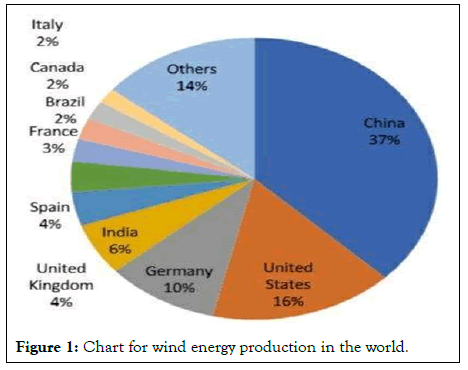
Figure 1: Chart for wind energy production in the world.
By 2031-2032, a large amount of energy should be generated from wind energy according to India’s Integrated Energy Policy (Figure 2). As being the second highest used renewable energy in India, we have to make more developments in this area to procure more energy efficiently. The western coastal region of India experiences continuous wind energy. However, it is not possible to install giant wind turbines on the complete coasts because of large amount of capital investments. In addition, the western coastal regions experience a continuous flow of wind at low altitude, which is unutilized.
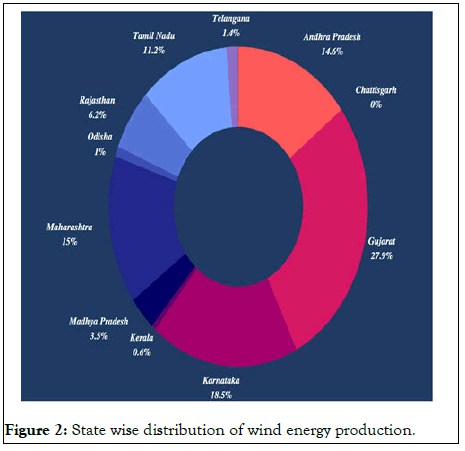
Figure 2: State wise distribution of wind energy production.
Our invention utilizes the steady wind flow at low altitudes and provides electricity at a very low cost [4]. This paper describes a small wind power system, which can be installed over a streetlight pole, tall trees (palm trees and coconut trees), pillars and columns to generate electricity. These windmills are firmly mounted on the bark of trees or below the bottleneck of an electric pole. It results in a new way of utilizing wind energy more efficiently and generates the maximum amount of energy from it. The following invention has a braking system to operate its control; this is because many coastal regions are habitable. It is occupied for coconut farming, dates farming and for tourism. Street light pole also requires maintenance [5]. Providing a braking system on the windmill will not harm any other activity carried out at the installing structure (here are trees, street pole etc.) The winds should firstly strike the blades to avoid turbulent flow. It is another reason why only coastal trees and streetlights at open spaces (for instance hilly regions, highways, and expressways) are suggested. The mounted wind turbines will help to generate electrical power from the continuous currents of wind [6]. It is cost-effective as well a reliable method for obtaining electricity for the villages in coastal regions as well as villages in a hilly and mountainous region. This system is designed and the paper is drafted by keeping the following things into consideration.
• Design of the system should be sophisticated so that it would be easy to mount and occupy minimum space.
• Special attention is put on the mounting portion of the system so that; it should remain intact and unaffected due to strong blow of winds.
• A wind and suitable yaw bearing is used for its movement towards the flow of wind.
• Suitable gear ratio is selected so that the generator should move at its rated speed to produce more electricity.
• Material selection of the gears.
• Internal hydraulic system of brakes.
• Material for wing.
• Future scope and further developments.
Working
Following are the parts of the windmill assembly (Figure 3).
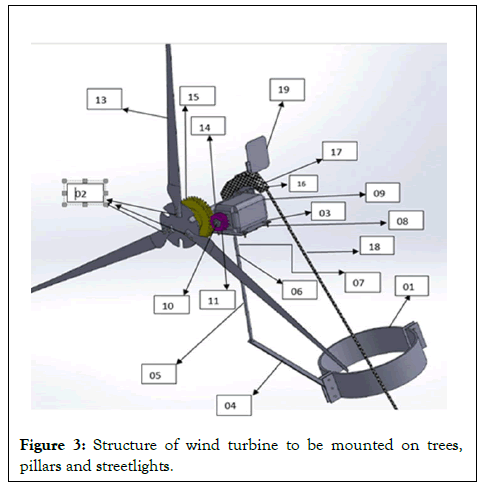
Figure 3: Structure of wind turbine to be mounted on trees, pillars and streetlights.
Different systems and parts of the assembly:
Braking system: The braking system of the wind turbine is essential. We had installed a braking system, which will stop the rotation of turbine blades while maintenance work is carried on. The braking system should be very strong because failure in holding the blades during maintenance may cause harm to the person. It consists of a brake rotor, caliper, brake hoses, small master cylinder arrangement and an actuating lever for the operation.
Mounting: The mounting of the windmill provides support from the structure on which it is mounted. It holds the position of it. Mounting is designed by considering the appropriate factor of safety (FOS). The mounting can be tightened according to the width of the structure.
Yaw bearing: A Yaw bearing is used to create an easy rotation of blades towards the direction of wind flow. An FRP cup is used to rest the pipe.
Rotating pipe: The pipe is used to support the generator assembly. It is welded with the coupling plate. The plate is designed to hold the compressive force by the weight of the generator assembly.
Bearing: Bearing is installed between the rotating pipe and the arm 2. This will ensure smooth rotation of the assembly towards the direction of the wind.
Yaw bearing: The rotating pipe is provided free rotation with the help of yaw bearing. It provides mounting of the pipe and smooth rotation of the pipe, thus turbine blades towards the direction guided by the tail.
Concept
The concept of mounting wind mill on the stiff structure depends on the strength of the clamps. The concept shown in the Figure 3 is the design of system to be mounted on street lamps and trees. Some design changes is made to make it applicable for different applications. Special attention has to be made at the time of assembling the structure on the structure. Turbine blades should be mounted at a specific height. The specific height should be such that the lowest end of the blade should be at 100 inches. This specific height is chosen so that the blade movement should not hurt the person standing up below the system. The arm 04 and arm 05 are called the supporting arms. There two arms provide the support to the system and form the linking arms between the winds mills to the structure. The tightening of the arms and the clamps forms the structure, which supports the system. Sufficient angle should be maintained between the system and the structure because the torque due to gravity of system with respect to the linkage of arm 04 and clamps 01 shown in Figure 4. The blades should receive wind flow of minimum turbulence this will cause more efficient operation of the system. Turbulent wins will cause the blades to shake. If the blades are obstructing the leaves of the trees in a blowing wind while working, we can set arm 1 at a particular angle. Fasten the bolts tightly without paly in between. Or else shaking may cause the turbine assembly to collapse to the ground. The present design displays the mounting of the system on the bark of the column. Design changes have to be made in the size of the clamps to put this system on a different structure. When the wind blades are moving, the generator shaft will move at more angular velocity due to the gear teeth relation between rotor shaft of generator and windmill (shaft 10 and 14 shown in Figure 4 respectively). The gear tooth ratio is defined in such a way that at a nominal wind speed (6.25 m/s at Western Indian Coast described in Figure 4 below) the turbine shaft of the assembly should be able to rotate the generator shaft at the rated speed of the generator. Another constraint while setting the gear ratio is the inertial force. The blades have to carry an additional inertial load of generator shaft and gear assembly. If this load exceeds to a limit, the wind blades will not be able to move at average velocity of wind and hence reduce the energy output. The generator will provide electricity with the help of back emf, which will further be passed to the grid or storage system with the help of wires. These wires will be protected inside the pipes or shaft because the seawater can cause corrosion at a faster rate. The whole generator assembly consists of blades, gears, generator and braking system [7]. When the direction of the generator assembly changes the rod which is supporting the assembly, connected with the help of rigid coupling also changes its direction. The rod is in contact with a yaw bearing that ensures smooth revolution of it. There will be a whole grid working on this system to produce a continuous supply of electricity (Figure 4). The produced power of the windmill from the coast or hilly terrains will be transferred to the transformer house for increasing the voltage. After increasing the voltage, the electricity will be passed over to the grid where there will be a facility of voltage regulation and energy storage system. After the storage house, the electricity will be passed over to residential and industrial locations for utilization.
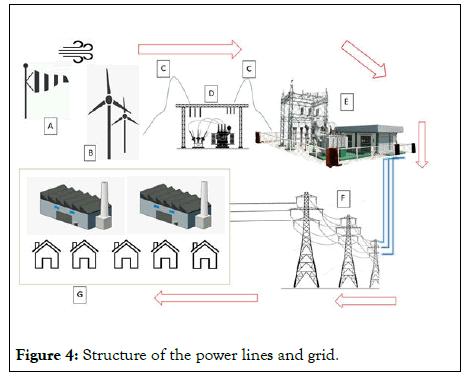
Figure 4: Structure of the power lines and grid.
Following are the parts of the whole system:
• Wind flow
• Windmills
• Wires
• Transformer
• Energy storage system and Grid
• Transmission wires
• Industries and Houses
Advantages:
• It is extremely vital to quantify the pros and cons of the system on the environment and Humans.
• Following is the list of advantages of the system.
• It can be mounted at the coastal regions where wind flow at low elevation is available.
• It is very cost-efficient as compared to the large one.
• It will provide sufficient electricity to power more than two streetlights.
• Its installation does not require a great foundation. It can be mounted on the plan trees and coconut trees of the beach and on the streetlights, pillars at the plains, (the reason is to avoid turbulent winds).
• The application of this form of a wind turbine in the peninsula and islands will provide a clean and continuous source of electrical energy.
• This type of arrangement can be applied over the towers or pole over the buildings.
• It can be applied over the riverbed along with the flow of the river. The strength of the breeze is directly proportional to the temperature difference between the Land and sea.
• The major disadvantages of turbines are the killing of birds. Small turbines at low altitude will not cause major biodiversity changes in flora and fauna near the Coastal area.
Applications in India
India has the coastline of 7516.6 km [6100] km of mainland coastline + coastline of 1197. Indian islands touching 13 States and Union Territories. The mainland coastline of Indian peninsula is 6100 km. According to the Mean Wind Speed map, the state of Gujarat, Maharashtra, Goa, Karnataka, Kerala, Tamil Nadu and Andhra Pradesh experiences a wind flow at 3.45 to 6.25 m/s as shown in Figure 5.
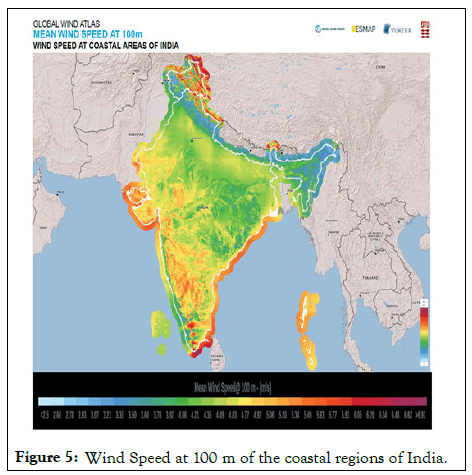
Figure 5: Wind Speed at 100 m of the coastal regions of India.
These regions are suitable of installation of windmill to produce continuous electricity [8]. Due to high currents of airflow and many unprecedented reasons, we cannot use all the coastal land available to us for windmill installation. Some coastal land cover is far from human habitat and some coastal regions are so close to the construction infrastructure that putting a windmill at these locations will be unreliable [9]. According to the Indian naval hydrographic charts, the mainland coastline consists of the following: 43% sandy beaches; 11% rocky shores, including cliffs; and 46% mudflats or marshy shores (Table 1).
| Name of state | Coastline in km |
|---|---|
| Gujarat | 1,596 km |
| Maharashtra | 720 km |
| Goa | 160 km |
| Karnataka | 320 km |
| Kerala | 580 km |
| Tamil Nadu | 1076 km |
| Andhra Pradesh |
975 km |
| Total Coastline | 5427 km |
Table 1: Mainland coastline of India.
We can easily install the system at the sandy beaches of the coastal area to procure electricity. Therefore, accordingly, we can use (5427*43%) 2333.61 km of land for windmill installation. Keeping a distance of 100 meters between two windmills. The government has launched National Action Plan on Climate Change (NAPCC) for decreasing the climatic impact of pollution. India is fourth largest producer of electricity through wind energy. In addition, the government is planning to produce 20% of the grid through wind energy by 2020. Accordingly, the wind energy production should be 56 G. By adding the system to the coastal region of India, it will contribute 7.82% of more electricity more from the coastal regions without affecting the natural life of birds in that region.
Further developments
• We can have a more sophisticated gear train by using nonmetallic gears. In this way, the total weight of the structure will remain within limits and higher rpm of the generator shaft can be achieved.
• Using a “by-wire” brake system can lighten the assembly. Besides, it can be proved a lighter substitute by using composites to make it even lighter.
• By adding mounting of more thickness and using a less economical alternative metal like MS C45, cast iron can reduce the overall cost. Wind turbine mounting discussed above is supporting the assembly. To attain maximum strength we can apply the mounting in the two positions. This will give more strength to the system.
• This assembly can be mounted at the top of the electric pole too.
• The hybrid attachment of solar panel on the blades can convert a much larger amount of electricity during days and night.
• Connecting and monitoring a large number of a wind turbine is extremely difficult. If any turbine is faulty, it is essential to track that windmill and correct it. We can develop a networkbased platform to track the windmill at every location and then we can take the maintenance work on that windmill.
• The windmills should have a coded number to make them easier to track. The coded number should have the information about the “State-Region (District Pincode)-System Number”.
• This platform should track the windmills with the help of this coded number. For instance, if there is any fault in the 400 system in Maharashtra in Mumbai at Girgaon beach the system should display MH_MUM 400004-400. The core of the paper is to put smaller well-designed wind energy structures on the regions of high wind flow to procure electricity. We can also mount vertical windmills to the trees, columns, pillars and streetlights. Vertical windmills have the least effect on birdlife.
• They are effective and they do not create any hindrance in the natural beauty of the environment too.
• With the help of meticulously designed foundation, we can create a rigid foundation at rocky shores. In this way, we can integrate 11% more land available at the Indian coast and provide more energy for the development of nearby villages and cities.
The installation of the above-discussed invention in high-density wind flow vicinity will prove to be very efficient and plausible for the generation of electricity. It can provide electricity to not only the streetlights but also it can contribute to the electricity delivered to nearby villages and places largely. It is a cost-effective method to procure electricity from the winds. Most importantly, it is a non-harmful renewable source to generate a large amount of energy.
Citation: Joshi R (2021) Generating Wind Energy at Low Altitude. J Fundam Renewable Energy Appl. S1:003.
Received: 05-Nov-2021 Accepted: 19-Nov-2021 Published: 26-Nov-2021
Copyright: © 2021 Joshi R. This is an open-access article distributed under the terms of the Creative Commons Attribution License, which permits unrestricted use, distribution, and reproduction in any medium, provided the original author and source are credited.